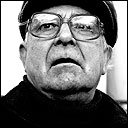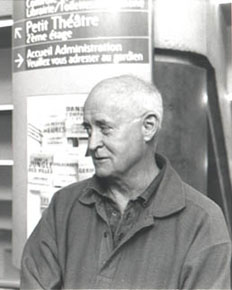
First performed at the Royal Court in 1959, Serjeant Musgrave's Dance (An Unhistorical Parable) is described in Arden's preface as being a realistic, but not a naturalistic play. It is set in England during an unspecified time, somewhere in the second half of the 1800s, in a Northern town governed by a mayor who also owns the coal mine, the only place of work for the people there. The mine has been shut down and the people being warned not to strike, to be patient, times are hard all around. But this is a secondary concern.
Structured in three acts, the play begins with Serjeant Musgrave and his men preparing to cross a river on a barge. They say they are out recruiting volunteers for the queen's army, they have boxes of rifles and a gatling gun along with them, and the three soldiers are devoted to their Serjeant. Once in the town the powers that be there - the Mayor, Parson and Constable are worried that the people will riot before the telegraph lines are fixed and they can send for the dragoons. They learn that there are soldiers seeking new conscripts coming to town and plan to enlist their help in getting some likely trouble-makers from the union drunk and conscripted before they start anything. By the end of the first act we know that the Serjeant and his men are not all that they seem.
In the second act things ratchet up a bit. The girl at the bar visits the soldiers at night, leading to one of them wanting to run away with her, abandon whatever plan the Serjeant is hatching, and when the others get wind of this he is accidentally killed. The frayed edges of the soldiers are showing, we learn they are haunted by something. Still they keep up appearances, give the coal miners a good time at the pub, eventually helping one of them get free of the constable when he comes back to steal the Gatling gun and start a riot. The Constable and Mayor are on high alert, worried that they'll lose control - and in the early morning hours the Sarjeant suggests they start their consciption rally - give free beer to the people and convince them to join their ranks rather than fight with the Union.
All setting up for the third act. Here the plan is unvieled, and we learn what's been haunting the Serjeant. They'd been sent to occupied countries, colonies of the crown, and after a young man was shot in the back by the people of the occupied town - they were ordered to, and carried out, a massacre - including women and children. The Serjeant's plan as he talks about the merits of serving for the crown, and displays the rifles and the Gatling gun are to turn the violence on the people. He's killed 25 people in a foreign land, in retaliation for the death of one of their sons, therefore to set the balance - and to show the people what is being done in their name - by way of bringing a stop to war - He will turn his guns on them - specifically the Mayor, the Constable and the Parson - since it is for their concerns they've gone to kill for the army.
I'll stop there. Just to prevent a spoiler. Outside of the story, the play uses songs - english folk songs, and moments of human kindness broken by authoritarian or mission-driven action. I'm left with a sense of the simplicity of the Serjeants plan - bring the carnage home and the people won't support wars abroad anymore - and the ultimate failure of his plan because of the humanity of his allies.
It would be an interesting play to do now.




























